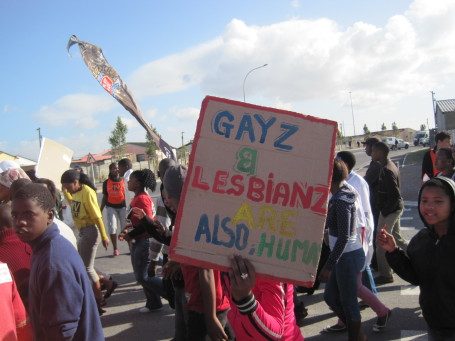Just think about what the rainbow flag – the ‘gay’ flag is meant to represent. It’s meant to be a metaphor for unity of diverse groups. The struggles to gain this unity – to protect this unity in South Africa – are struggles that must be written about. To not speak about these issues is to belittle not only what the flag represents but also the incredible challenges and successes that continue to define this country.
 On Clifton Third Beach, muscular male bodies of all hues, from deep ebony to blinding white, from chemically bronzed to natural beige lie side by side. This is Cape Town’s ‘gay beach’. At the height of summer, the vast majority of sun worshippers here are male, though scattered between them are always a few umbrellas with families and children, who seem quite unperturbed by the occasional kiss, body rubs and other demonstrative physical affection between the men. It’s a postcard for the country’s human rights based Constitution; black and white, straight and gay, male and female, all peacefully luxuriating in natural beauty.
On Clifton Third Beach, muscular male bodies of all hues, from deep ebony to blinding white, from chemically bronzed to natural beige lie side by side. This is Cape Town’s ‘gay beach’. At the height of summer, the vast majority of sun worshippers here are male, though scattered between them are always a few umbrellas with families and children, who seem quite unperturbed by the occasional kiss, body rubs and other demonstrative physical affection between the men. It’s a postcard for the country’s human rights based Constitution; black and white, straight and gay, male and female, all peacefully luxuriating in natural beauty.Yet this represents only a privileged minority of broader society, and the homosexual men within it are a tiny subset of queer men in South Africa. Many of the Clifton clique share the same circuit; the beach, the Virgin Active gym, the sauna, clubs and bars of Green Point’s world famous ‘gay village’. They either have good incomes or at the very least access to money. They are the visible gay set; the gays you find in television soap operas; the gays that car advertisers and so-called ‘lifestyle’ marketers target; the gays who magnetize the city’s booming rainbow tourist industry.
Read the rest.

No comments:
Post a Comment